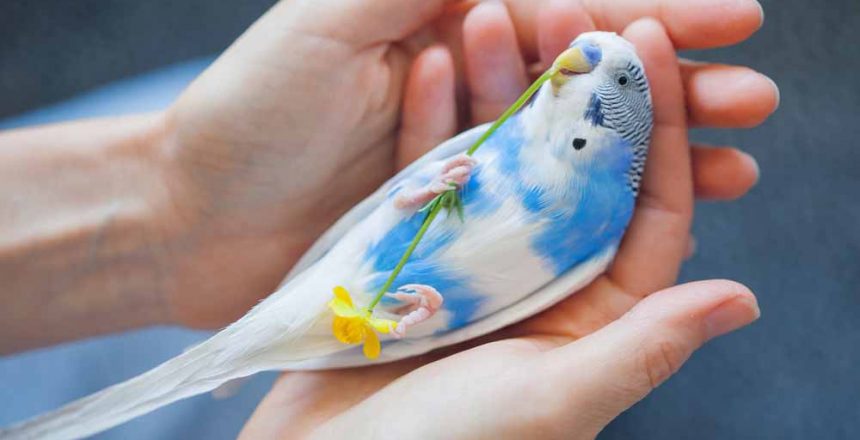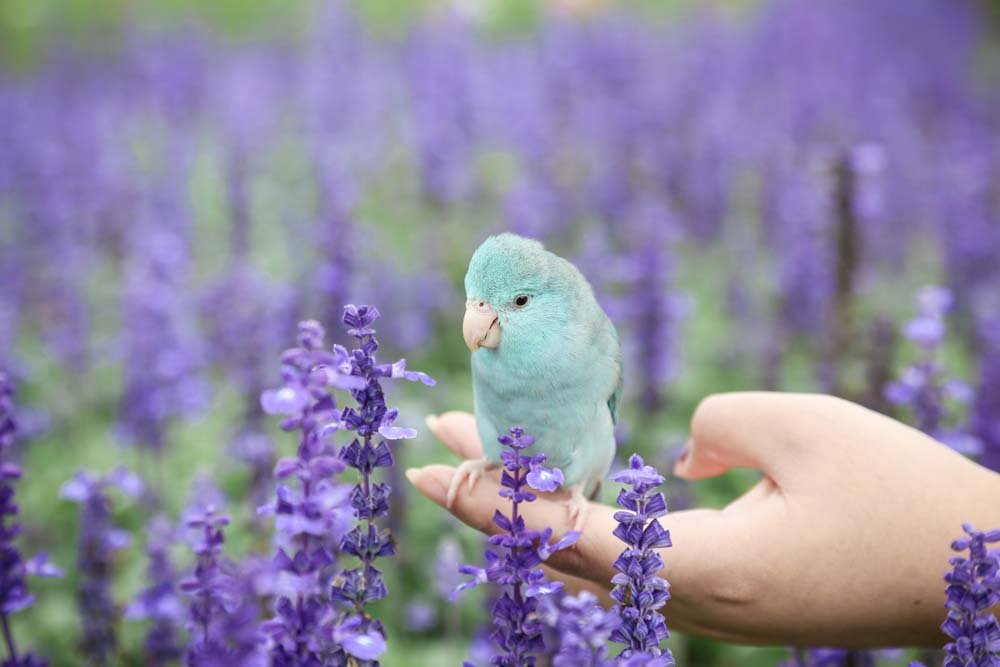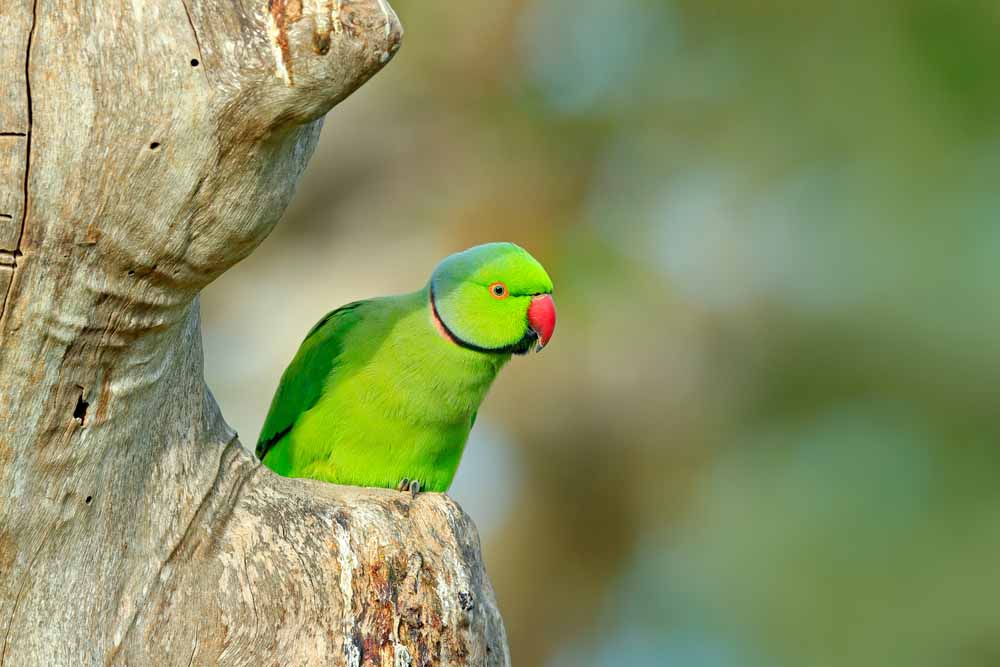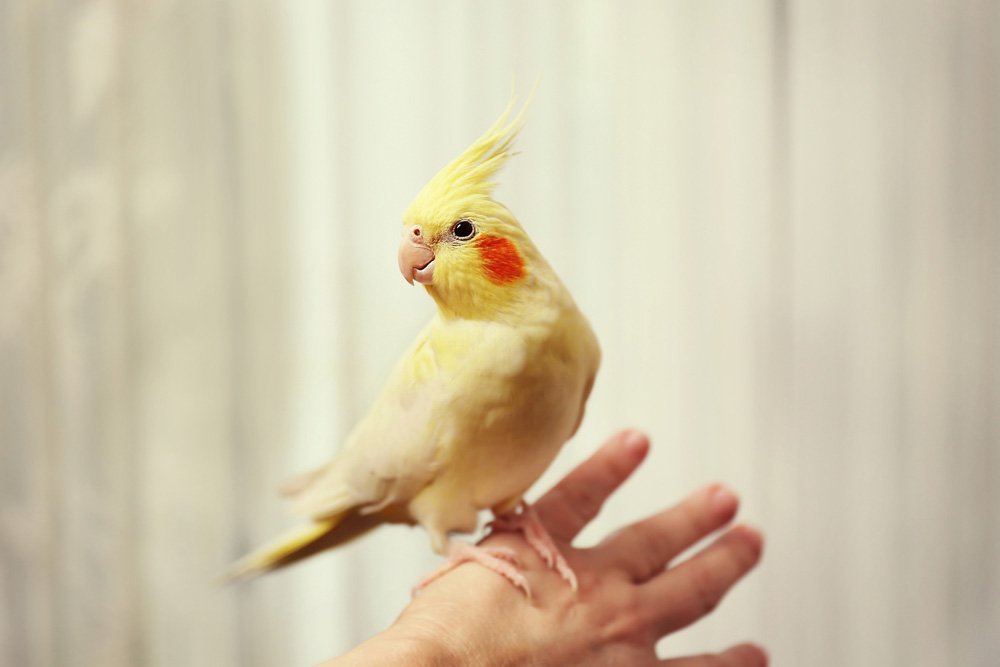Finding the right type of parrot for you can be very tricky, but if you like one that’s cute, small and very friendly, then the budgie parakeet is one of the best options out there.
Also known as the budgerigar or the budgie, this beautiful parrot is similar to the birds you see in pet shops most of the time. It’s smaller, it can be around 6-7 inches, and it can only be found in a few colors, such as white, green, gray, mauve, blue or yellow. Usually, the main color for the budgie parakeet is green. The thing you will notice about these beautiful birds is that they are very small and friendly. They are not as noisy as others, and it’s just a pleasure to have them around and enjoy your time with them.
Habitat and Distribution
Originally, the budgie parakeet comes from Australia. You can still find undulating, large budgerigar flocks in there roaming the grasslands without disturbing people. The wild budgie is very similar to the ones in pet shops, the only difference is that the wilder ones eat less and thus they are even slimmer when compared to the ones in shops!
This is also a nomadic bird, and they mostly migrate from one place to the other in search of water. The reason is simple, water is rather limited in the scrublands. That’s where the wild budgie parakeets live, so they do need to go to new regions all the time just to stay alive. These birds breed during the rainy season, as that’s when they have enough water. As you can imagine, the budgie parakeet can be a pest for farmers and crops, which they eat to survive.
How to take care of your budgie parrot?
[thrive_leads id=’1163′]
Diet: The budgerigar will live anywhere from 8 to 15 years, more or less depending on how you take care of him. You have to keep in mind that wild budgies are slim, however, if you keep them as a pet in a cage they can easily get fat. Plus, they can easily deal with food disorders, intestinal parasites, and scaly face problems. Taking your budgie to the vet often is a very good idea, as it will help keep his health under control.
When it comes to what the budgie parakeet will eat, he will need plant material and seeds. They tend to love seeds more often than not, especially those from the stores that also have veggies, fruits, and healthy pellets as well as minerals. That can be amazing and a great opportunity for you to test and explore. You can also add veggies and fruits to their diet, such as spinach, sweet potato squash, mango, broccoli, parsley, carrots, grapes, apples, pumpkins and so on. It’s important for your budgie to have a varied diet, however, seeds are by far the pivotal component of their diet!
Cleanliness: Just like any other bird, the budgie needs to have a clean cage. These birds are prone to goiters, tumors and just about all kinds of conditions related to a diet full of seeds. They can also have leg mites and a scaly face. This is why you need to clean their feet often and go to the vet whenever you see any problems. The vet will let you know if your bird needs any special care and assistance. And you have to study all of that to see if you can do anything or if there are some methods you can use to stop any potential problems.
We also recommend you to bathe your budgie regularly, just to be safe. While there, make sure that you provide cuttlebone for calcium, as it keeps your bird’s beak very healthy!
Cage: Usually, the larger the cage, the better the experience your budgie will have. Even if they are small birds, you have to remember that they are nomads. They love flying and exploring new locations. While they can’t do that while being trapped in a cage, it does help if the cage you get is a large one. So just because you see a smaller bird, don’t assume they need a small cage. The budgie parakeet is a social bird, so adding in another budgie in there might help. But then again you do need a large cage, just to be safe.
Behavior: The budgerigar is very easy to tame. However, as we mentioned earlier, these are social birds. They don’t last for a long time if you keep them by themselves. The best thing that you can do is to make sure that you get another budgie. Although a single one will be ok too if you talk with him and entertain him every day.
When it comes to kids, budgies are ok with them as long as your child won’t attack this bird. That’s why adult supervision is recommended in such a situation, just to be safe. When the budgie parakeet is angry, he will try to use his beak to attack. Even if the beak is not that large or powerful, it’s important to note that he can still hurt some small fingers. And it will hurt for sure.
Sound: Budgie parakeets are very smart. In fact, the budgie is one of the best-talking birds out there. He can learn whistles, phrases, and words without that much of a problem. Some budgies are known to repeat more than 1700 words. While you can’t expect something like this from all birds, it’s safe to say that they are smart and you can easily talk with them and teach them words. A good thing to keep in mind is that males are more talkative than females. However, females can also learn words as well. But yes, these birds are very noisy, so you have to know that going in. For a lot of people, it won’t matter, yet it’s still something to consider. Getting some toys for your budgie might shut him out for a while!
How to know if the budgie parakeet is right for you?
You will find a wide range of budgie types. Even if the original budgies were green, nowadays you can find more than 70 different mutations. It all comes from breeding and not from natural sources. Another thing to consider is that these birds are sexually dimorphic, so you can easily figure out the gender after 8 months or even less. The male’s cere is blue, the female has a brown or pink cere. There are however males with pink cere too.
You can go with the English show budgie since it’s a small pet and very easy to train. It is, however, a bit larger than the other mutations. They also tend to have multiple color combinations. But just about any type of budgie parakeet will do just fine, provided that you have enough space for him and you offer a proper, healthy diet!



